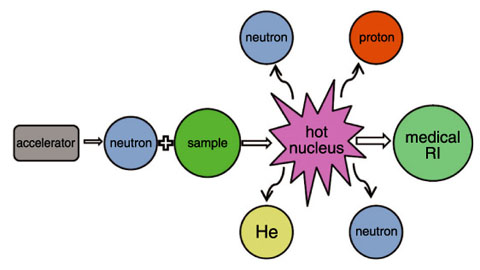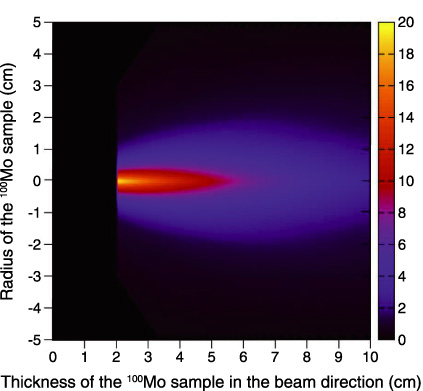
Fig.7-25 Production of medical RIs by using accelerator neutrons

Fig.7-26 Calculated yield distribution of 99Mo
A radioisotope (RI) with a half-life (T1/2) of less than several days plays an important role in nuclear medicine. The daughter nuclide of 99Mo (T1/2=66 h), i.e., 99mTc (T1/2=6 h), is used for diagnostics, and 90Y (T1/2=64 h) is used for cancer therapy. Most medical RIs, including 99Mo and 90Y, are imported in Japan. An unscheduled shutdown of aging research reactors in which most of the 99Mo nuclide was produced has resulted in a critical shortage of 99Mo worldwide. Therefore, the establishment of a reliable production method for 99Mo is very important to ensure the continued medical applications of 99mTc.
We have proposed a new route for producing medical RIs using accelerator neutrons, as shown in Fig.7-25. In fact, a variety of medical RIs can be produced using accelerator neutrons as the production cross section of a sample nucleus is large at En=10∼15 MeV. For example, the 99Mo production cross section of the 100Mo(n,2n)99Mo reaction is 1.5 b at En≈10∼20 MeV, while the 97Zr production cross section of the 100Mo(n,α)97Zr reaction is 0.002 b. Note that 97Zr, a radioactive impurity nucleus, is produced in small amounts. The 90Y production cross section of the 90Zr(n,p)90Y reaction is also large. High-quality 99mTc and 90Y can be separated from the irradiated Mo and Zr samples by sublimation and ion exchange, respectively. Quasi-mono energetic, high intensity accelerator neutrons (En=10∼15 MeV), therefore, are very useful for the production of medical RIs.
Neutrons (about 1015 n/s) with an En of about 14 MeV are produced in the natC(d,n) reaction using 40 MeV 5 mA deuteron beams provided by an accelerator. Such an accelerator is currently under construction in France.
We evaluated the angular and depth distributions of 99Mo that was produced by using the accelerator neutrons to study the effective use of the neutrons, as shown in Fig.7-26. It is shown that the 99Mo yield is restricted to a narrow region at an extremely forward angle with respect to the deuteron beam direction; this observation assisted us in obtaining high-specific-activity 99Mo.
The present results motivated us to employ this new RI production method to ensure constant and assured supply of medical RIs for domestic use and to open a new frontier in medicine and pharmacy.
<Previous: 7-9 | Next: 8 Nuclear Hydrogen and Heat Application Research >